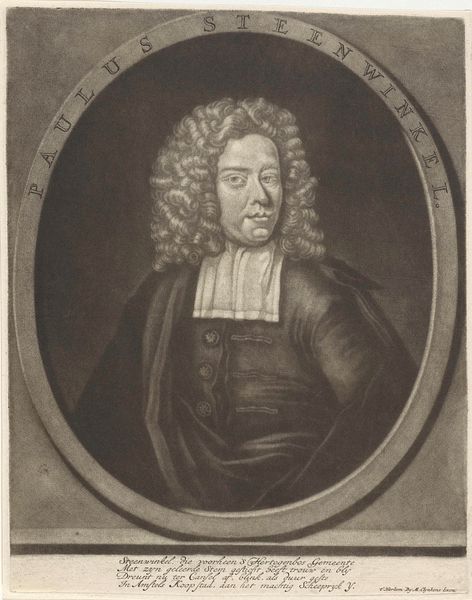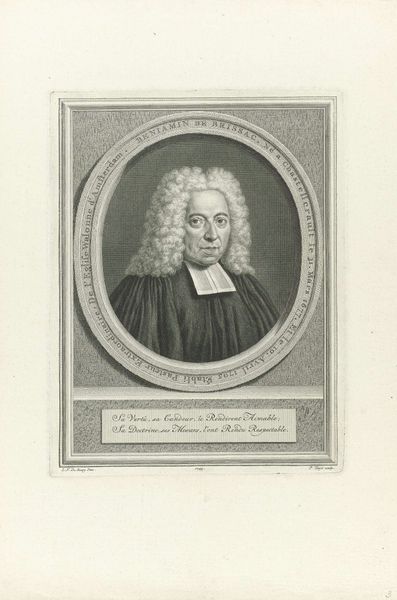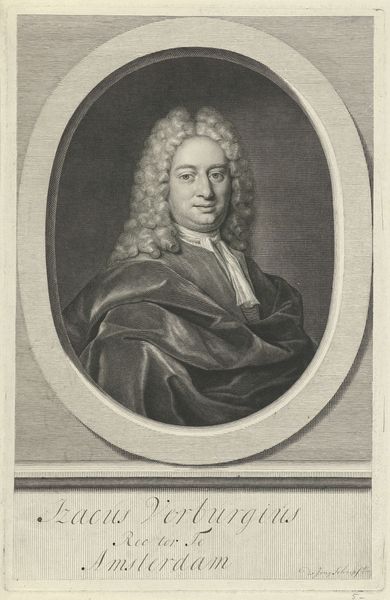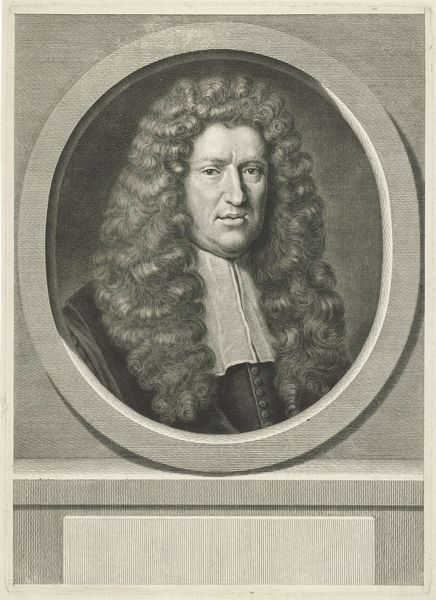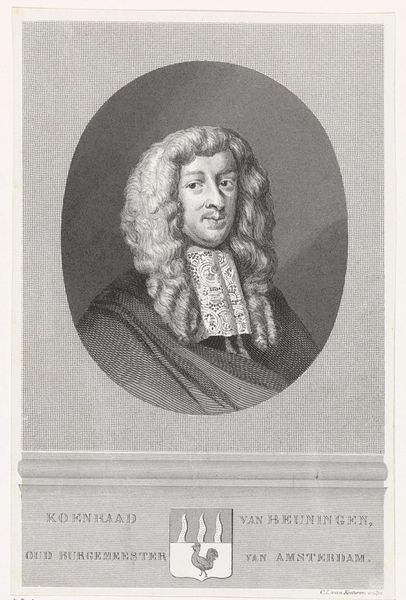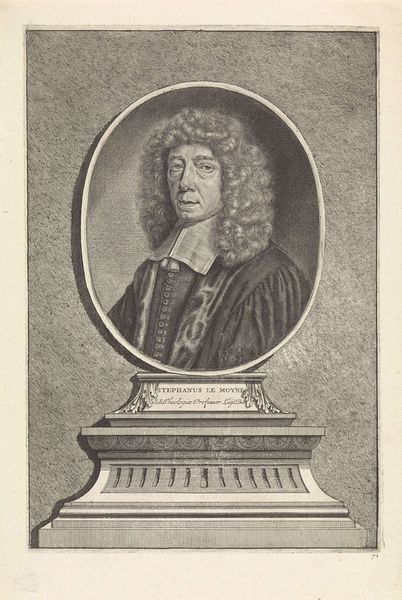
print, engraving
#
portrait
#
baroque
# print
#
old engraving style
#
engraving
Dimensions: height 129 mm, width 106 mm
Copyright: Rijks Museum: Open Domain
Editor: This is "Portret van een magistraatspersoon," or "Portrait of a Magistrate," an engraving dating possibly from 1716 to 1725, by John (I) Faber. I’m struck by the subject’s intense gaze, which somehow seems to penetrate the ornate baroque style. What do you see in this piece, considering the era in which it was made? Curator: Well, this portrait speaks volumes about the social and political structures of the time. Faber's meticulous engraving reflects the Dutch Republic's obsession with civic virtue and social standing. The elaborate wig, the magistrate’s attire - all meticulously rendered - signify authority. How do you think prints like this functioned in the public sphere back then? Editor: It seems like this engraving was not just about representing an individual, but also reinforcing a certain societal order. Were these kinds of portraits readily accessible to the general public? Curator: Not readily, no. Prints like these would often circulate within specific social and professional circles. They served as markers of prestige but also tools for consolidating power. Think about it - how might controlling the *image* of authority shape public perception of the law and justice? Editor: I see, so the very act of commissioning and displaying this portrait reinforced the magistrate’s authority and the power structures of the era. The level of detail in the engraving emphasizes his importance, creating an idealized representation of civic leadership. I had been focusing on aesthetics at first. Curator: Exactly! It's about power dynamics and the politics of representation. Looking at the subject’s pose, how does that contribute to the message being sent? Editor: Now that you point it out, he's very frontal, there’s no dynamic pose; he appears self-assured. I hadn't realized how much context informs my reading of an artwork's mood. Curator: Right, and this is precisely where history meets art. What's our takeaway? Editor: This wasn't just an image; it was a carefully crafted statement of power, circulated strategically within a specific social landscape. I appreciate how seeing this piece through a historical lens brings depth to my understanding of the Magistrate.
Comments
No comments
Be the first to comment and join the conversation on the ultimate creative platform.





